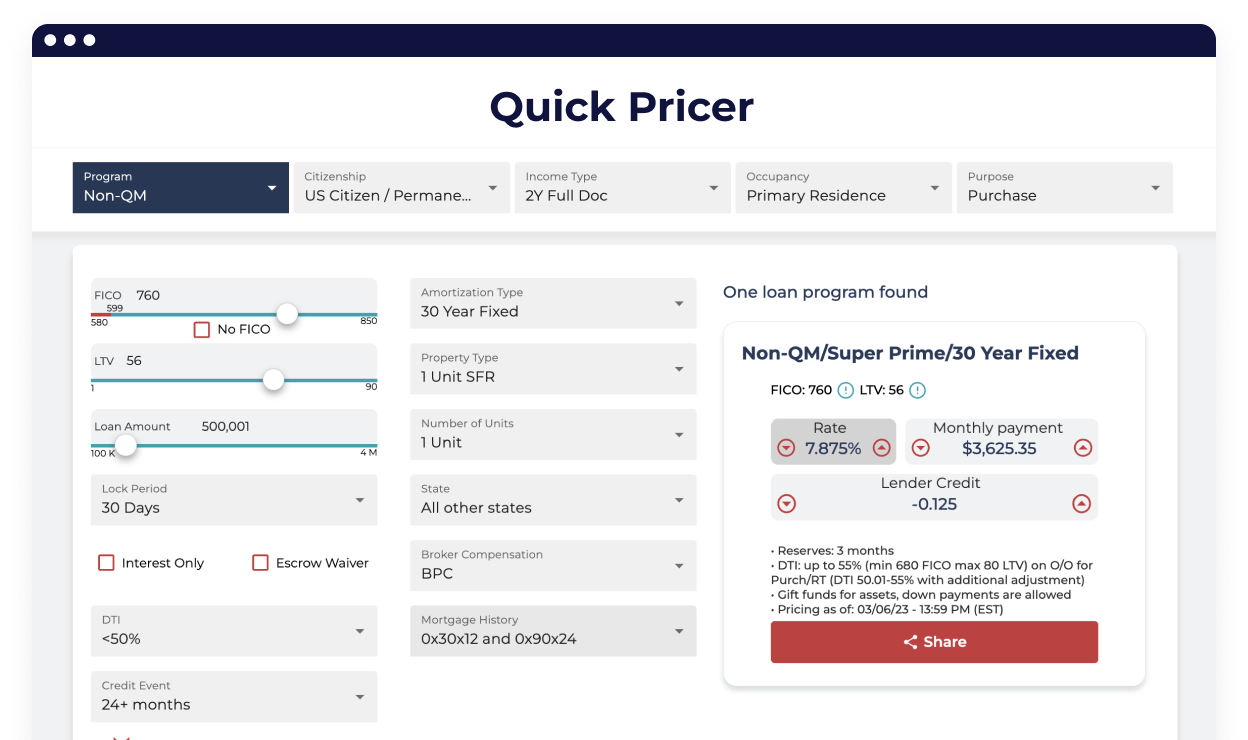Freddie Mac Home Possible is a mortgage program designed to help low- and moderate-income buyers achieve homeownership. It offers low down payment financing with discounted fees and flexible loan options, making it easier to qualify for a mortgage.
Program features
Struggling with a loan scenario? Push the button and get a solution in 30 minutes!
Write to us, we will contact you within 30 minutes.

24 hours
24 hours
24 hours
No, you need to verify only a borrower’s qualifying income. For example, if the borrower can qualify for the mortgage with their base pay and not their overtime income, you may use only the base pay to determine Home Possible eligibility.
Yes, the occupying borrower may have an ownership interest in one additional financed residential property.
No. The Home Possible mortgage is available to all qualified borrowers whose income does not exceed 80% of the area median income (AMI).
No. Non-occupying borrowers are permitted on one-unit properties that meet the LTV ratio requirements in the Guide. However, at least one borrower must occupy the property as their primary residence.
Note: Income from non-occupying borrowers is included in the AMI calculation.
Borrowers without a credit score can qualify for a Home Possible mortgage, provided the LTV/TLTV/HTLTV ratio for the mortgage does not exceed 95 percent. Sellers can qualify such borrowers in one of the following ways:
No. A Home Possible mortgage cannot be a cash-out refinance mortgage. The only refinance mortgages that can be Home Possible mortgages are no cash-out refinance mortgages.
A gift or grant from a lender is allowed only after a minimum three percent contribution is made from borrower personal funds or other eligible sources of funds.
In addition to their own funds, a borrower can also receive assistance in reaching the minimum three percent contribution on a one-unit property from other sources. These include: a gift from a person meeting the Guide definition of a related person, funds from a governmental or non-governmental agency, Employer Assisted Homeownership (EAH) programs, and Affordable Seconds®. Contributing agencies must not be affiliated with the lender or the origination of the mortgage except in the case of an EAH. See Guide Section 4501.10 (c) for more information on sources of funds.
No. Down payment assistance cannot be funded through the mortgage transaction in any way, including through points, price, fees, or any activity that might be described as premium financing.
Yes. You can use premium financing to assist a borrower with closing costs, financing costs, and prepaids/escrows.
No. Homeownership education is required only for a purchase mortgage when all borrowers are first-time homebuyers or if the credit reputation for all borrowers is established using only Noncredit Payment References. In both instances, at least one borrower must complete a homeownership education program for a purchase mortgage before the mortgage’s note date.
No. Homeownership education is not required for Home Possible mortgages that are refinances.
You can meet this requirement with homebuyer education provided by HUD-approved counseling agencies, housing finance agencies (HFAs), community development financial institutions (CDFIs), mortgage insurance companies or other programs that meet National Industry Standards for Homeownership Education and Counseling. Borrowers may also choose to take our free homeownership education course CreditSmart® Homebuyer U.
Yes. If the program meets our requirements, it will fulfill Home Possible homeownership education requirements. For details on education requirements see Guide Section 5103.6: Homeownership education.
You can use the Home Possible Income and Property Eligibility Tool to verify if a borrower can qualify for a Freddie Mac Home Possible® mortgage based on the property location and the borrowers’ qualifying income. Enter a street address in the tool and a pop-up window will appear with the most accurate results available.